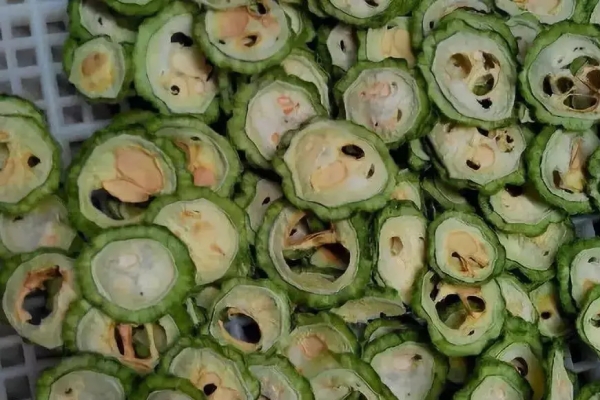Vegetable Drying Process
Vegetable drying is a processing method that removes moisture from fresh vegetables through heating, air drying, or other techniques, allowing them to be stored for extended periods. Dried vegetables not only have a longer shelf life but also retain their concentrated nutrients and flavors, while reducing their size and weight, making them easier to transport and store. Below is the vegetable drying process.

After pre-treatment, vegetables are evenly spread on drying trays, avoiding overlap to ensure that each piece of vegetable is adequately heated. The loaded drying trays are then placed into the drying equipment. Modern drying equipment typically features a multi-layer design, allowing large quantities of vegetables to be processed at once, significantly increasing production efficiency.
The key to vegetable drying lies in controlling temperature and humidity. Typically, the drying temperature is set between 50-70 degrees Celsius, with specific adjustments made based on the type, thickness, and moisture content of the vegetables. Intelligent control systems can monitor and adjust drying parameters in real-time, ensuring uniform drying of the vegetables while maintaining their optimal quality. Drying time usually ranges from 6 to 12 hours, depending on the type of vegetable.
Modern vegetable drying equipment uses a hot air circulation system, which allows hot air to flow evenly over and through the vegetables, rapidly evaporating moisture. The scientifically designed airflow channels and evenly distributed heat sources ensure uniform drying of the vegetables, preventing over-drying or under-drying, and guaranteeing consistent quality in each batch.
After drying, the vegetables need to be gradually cooled to prevent texture changes or damage caused by sudden cooling. The cooled vegetables should be placed in a clean environment to naturally cool down to room temperature. Once cooling is complete, the dried vegetables are removed from the drying equipment, graded, packaged, and stored.
Dried vegetables undergo moisture and quality inspection to ensure they meet storage and consumption standards. Vegetables that meet the standards are packaged according to different grades and stored in dry, well-ventilated warehouses to maintain their quality and taste. Common packaging methods include vacuum packaging or nitrogen-filled packaging, which can effectively extend the shelf life of dried vegetables.

